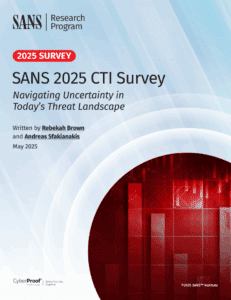Google Cloud’s security framework is built on a foundation of rigorous physical, technical, and administrative controls. These measures are designed to safeguard data throughout its lifecycle, from secure deployment and storage to encryption and access management. By leveraging Google Cloud’s advanced security features, organizations can mitigate risks and protect sensitive data against evolving threats.
Key focus areas in Google Cloud Security include core infrastructure security, identity and access management (IAM), network security, data encryption, security operations, and regulatory compliance. Each of these areas plays a crucial role in maintaining the integrity and confidentiality of data within the cloud environment.
In this guide, we will explore the various aspects of Google Cloud Security, providing detailed insights into the technologies, practices, and strategies that make Google Cloud a leader in cloud security. Whether you’re a CISO, CIO, or SOC Manager, this guide will offer valuable information to help you enhance your organization’s cloud security posture.
Core Infrastructure and Physical Security
Ensuring the security of the foundational infrastructure is paramount in safeguarding cloud environments. Google Cloud’s core infrastructure is meticulously designed with multiple layers of security to protect data centers, hardware, and software. This robust infrastructure forms the backbone of Google Cloud’s security framework.
Security of Physical Premises
Google Cloud data centers are equipped with state-of-the-art physical security measures. These facilities are designed with multiple layers of security to prevent unauthorized access. Security features include biometric identification systems, metal detectors, cameras, vehicle barriers, and laser-based intrusion detection systems. Each of these measures is designed to ensure that only authorized personnel can access the data center floors, thereby protecting the sensitive equipment and data stored within.
Hardware Design and Secure Boot Stack
The hardware within Google data centers is custom-designed to meet rigorous security standards. Google designs its own server boards and networking equipment, selecting components with security in mind. This includes deploying custom security chips, such as the Titan chip, which serve as hardware roots of trust. These chips authenticate legitimate Google devices at the hardware level, ensuring that each server boots with the correct software stack. Cryptographic signatures are used for low-level components, including the baseboard management controller (BMC), BIOS, bootloader, kernel, and base operating system image. These signatures are validated during each boot cycle to maintain the integrity of the server’s software.
Inter-Service Access Management
Google Cloud’s infrastructure is built on a zero-trust security model, where no devices or users are trusted by default. This model requires stringent inter-service access management to ensure that only authorized services can communicate with each other. Applications use cryptographic authentication and authorization to enforce access control policies. This approach ensures that services can only access data and resources that they are explicitly authorized to use, thereby reducing the risk of unauthorized access and potential data breaches.
Encryption of Inter-Service Communication
All communication between services within Google Cloud is encrypted to ensure confidentiality and integrity. Google employs the Application Layer Transport Security (ALTS) system to secure remote procedure call (RPC) communications within its infrastructure. This system provides end-to-end encryption for all inter-service traffic, adding an additional layer of security. Exceptions to encryption are rare and only granted for traffic with low latency requirements that remains within the secure physical boundaries of a single data center.
Operational Security and Incident Response
Google Cloud employs sophisticated monitoring and incident response mechanisms to detect and mitigate threats. The infrastructure includes automated systems that ensure servers run up-to-date software stacks, including security patches. These systems also detect and diagnose hardware and software issues, ensuring the integrity of machines and peripherals. In case of a security incident, Google’s security team responds swiftly, leveraging advanced threat detection and response capabilities.
By implementing these comprehensive security measures at the core infrastructure level, Google Cloud ensures that the foundation of its cloud services is secure. This enables organizations to build and operate their cloud environments with confidence, knowing that their data and applications are protected by some of the most advanced security technologies and practices available.
Identity and Access Management (IAM) for Google Cloud Security
Identity and Access Management (IAM) is a crucial component of cloud security, ensuring that the right individuals and services have the appropriate access to resources. Google Cloud’s IAM provides the tools necessary to manage permissions and access to cloud resources efficiently and securely.
Importance of IAM in Cloud Security
IAM is foundational to securing cloud environments because it controls who can access resources and what actions they can perform. Effective IAM policies help prevent unauthorized access and reduce the risk of security incidents by enforcing the principle of least privilege. By granting only the necessary permissions required for a task, IAM minimizes the potential attack surface and limits the damage that could result from a compromised account or service.
Overview of IAM Features and Best Practices
Google Cloud IAM offers a range of features that facilitate granular access control and secure management of permissions. Some key features include:
- Roles and Permissions: Google Cloud IAM provides predefined roles that bundle permissions for common tasks, as well as the ability to create custom roles tailored to specific needs. This flexibility allows organizations to assign precise levels of access to users and services.
- Service Accounts: These are special accounts that applications and services use to authenticate and access Google Cloud resources. Service accounts help isolate and manage permissions for different components of an application, ensuring that each part operates within its designated scope.
- Policies and Conditions: IAM policies define who has access to resources and under what conditions. These policies can be applied at various levels, including the organization, project, and resource levels, allowing for comprehensive access control across the cloud environment.
Detailed Explanation of IAM Roles, Policies, and Configurations
Roles and Permissions
Google Cloud IAM offers three types of roles: predefined roles, custom roles, and basic roles. Predefined roles are managed by Google and are designed to perform specific tasks, such as managing Compute Engine instances or accessing BigQuery datasets. Custom roles allow organizations to create tailored roles by combining specific permissions to meet their unique security requirements. Basic roles (Owner, Editor, Viewer) provide broad permissions and are generally not recommended for fine-grained access control due to their extensive scope.
Service Accounts
Service accounts are essential for managing access for applications and services running on Google Cloud. They provide a secure method for these entities to authenticate and interact with Google Cloud APIs and resources. By using service accounts, organizations can implement the principle of least privilege, ensuring that applications only have access to the resources they need to function correctly.
Policies and Conditions
IAM policies are used to grant permissions to users, groups, and service accounts. These policies are written in JSON or YAML and define the roles assigned to each member. Policies can also include conditions that specify when the policy is applicable, such as during specific times or from particular IP addresses. This conditional logic adds an extra layer of security by restricting access based on context.
Best Practices for Implementing IAM
- Use Least Privilege: Assign only the necessary permissions required for a task. Avoid granting broad permissions and regularly review and adjust roles and permissions as needed.
- Regularly Audit IAM Policies: Conduct periodic audits of IAM policies to ensure that they adhere to the principle of least privilege and comply with organizational security policies.
- Implement Multi-Factor Authentication (MFA): Enable MFA for user accounts to add an additional layer of security.
- Monitor and Log IAM Activities: Use Google Cloud’s logging and monitoring tools to track IAM activities and detect any suspicious access patterns or policy changes.
- Use Service Accounts for Automation: Utilize service accounts for automated processes and applications, ensuring that each service account has only the permissions it needs.
By following these best practices and leveraging the robust features of Google Cloud IAM, organizations can effectively manage access to their cloud resources, ensuring that their cloud environment remains secure and compliant with industry standards.
Network Security and Virtual Private Clouds (VPC)
Network security is a critical aspect of protecting cloud environments. In Google Cloud, Virtual Private Clouds (VPCs) play a central role in isolating and securing network traffic. This section delves into the importance of network security, the function of VPCs, and the security controls available within Google Cloud.
Importance of Network Security in Cloud Environments
Network security ensures that data transferred within and outside of the cloud environment remains secure from unauthorized access and attacks. Effective network security prevents data breaches, protects sensitive information, and ensures compliance with regulatory requirements. In a cloud context, where resources are shared and accessed over the internet, robust network security measures are essential to safeguard organizational data and operations.
Virtual Private Clouds (VPCs) and Their Role
VPCs in Google Cloud provide a flexible, scalable, and secure environment to manage network resources. A VPC is a virtualized network dedicated to an organization within Google Cloud, allowing for the configuration and management of network settings, subnets, and IP address ranges. VPCs enable organizations to isolate their cloud resources, control internal and external traffic, and implement security policies that align with their specific needs.
Overview of VPC Service Controls and Cloud Interconnect
VPC Service Controls
VPC Service Controls enhance the security of services managed by Google Cloud by allowing organizations to define security perimeters around their resources. This feature helps mitigate the risk of data exfiltration and provides additional protection for sensitive data. Key benefits include:
- Perimeter Protection: Define boundaries around Google Cloud services to restrict data movement.
- Access Control: Control access to resources within the perimeter based on IP addresses, device attributes, and other conditions.
- Audit Logging: Monitor and log access to resources within the security perimeter to detect and respond to suspicious activities.
Cloud Interconnect
Cloud Interconnect provides dedicated, high-speed connections between an organization’s on-premises network and Google Cloud VPCs. This service offers several advantages for network security:
- Private Connectivity: Establishes private connections that bypass the public internet, reducing exposure to potential threats.
- Enhanced Performance: Provides high-bandwidth, low-latency connections for better performance and reliability.
- Scalability: Supports the growth of network demands with scalable bandwidth options.
Best Practices for Securing VPCs
- Implement VPC Firewalls: Use VPC firewalls to control inbound and outbound traffic to and from instances within the VPC. Define rules that specify allowed and denied traffic based on IP addresses, protocols, and ports.
- Use Private IPs: Whenever possible, use private IP addresses for internal communication within the VPC. This reduces the exposure of resources to the public internet.
- Enable VPC Flow Logs: Enable VPC Flow Logs to capture detailed information about network traffic. This data can be used for monitoring, troubleshooting, and improving network security.
- Leverage Network Segmentation: Segment your VPC into multiple subnets to isolate resources based on their function and security requirements. This helps contain potential security incidents within specific segments of the network.
- Utilize Network Address Translation (NAT): Use NAT gateways to allow instances in a private subnet to access the internet or other Google Cloud services without exposing their private IP addresses.
- Monitor and Respond to Threats: Continuously monitor network traffic using Google Cloud’s security tools, such as Cloud Armor and Security Command Center, to detect and respond to threats in real-time.
VPC Peering and Shared VPCs
VPC Peering
VPC Peering enables you to connect multiple VPCs within Google Cloud, allowing resources in different VPCs to communicate privately using internal IP addresses. This is useful for integrating workloads across different VPCs while maintaining network isolation.
Shared VPCs
Shared VPCs allow organizations to share a VPC across multiple Google Cloud projects, enabling central management of network resources. This is beneficial for large organizations with multiple teams or departments, as it simplifies network management and enhances security by centralizing network policies and controls.
By leveraging the capabilities of VPCs, VPC Service Controls, and Cloud Interconnect, organizations can create a secure and efficient network environment in Google Cloud. Implementing best practices and utilizing advanced network security features ensures that cloud resources are protected from unauthorized access and potential threats, maintaining the integrity and confidentiality of sensitive data.
Data Encryption and Secure Data Storage
Data encryption and secure data storage are foundational elements of cloud security, ensuring that sensitive information remains protected both at rest and in transit. Google Cloud offers robust encryption mechanisms and comprehensive data management practices to safeguard data against unauthorized access and breaches.
Encryption Methods for Data at Rest and in Transit
Data at Rest
Google Cloud automatically encrypts all data at rest using one or more encryption mechanisms. This includes data stored in persistent disks, Cloud Storage, and other Google Cloud services. Key features of Google Cloud’s encryption at rest include:
- Layered Encryption: Data is encrypted at multiple layers, including the application, storage infrastructure, and hardware levels. This multi-layered approach ensures that data remains secure even if one layer is compromised.
- Default Encryption: By default, Google Cloud encrypts all user data before it is written to disk, without requiring any additional configuration from the user.
- Customer-Managed Encryption Keys (CMEK): Organizations can choose to manage their own encryption keys using Cloud Key Management Service (KMS). This provides greater control over key management and enhances security by allowing organizations to implement their own key rotation policies.
Data in Transit
Data in transit is protected using encryption protocols that ensure confidentiality and integrity during transmission. Key features of Google Cloud’s encryption in transit include:
- Transport Layer Security (TLS): Google Cloud uses TLS to encrypt data transmitted between user devices and Google Cloud services, as well as between Google Cloud services.
- Application Layer Transport Security (ALTS): For inter-service communication within Google Cloud, ALTS provides end-to-end encryption and mutual authentication, ensuring that data remains secure as it moves across the infrastructure.
Key Management Services (KMS)
Google Cloud offers Cloud KMS to help organizations manage their encryption keys securely. Cloud KMS provides several features that enhance data security:
- Centralized Key Management: Cloud KMS allows organizations to create, manage, and rotate cryptographic keys from a central location, simplifying key management processes.
- Granular Access Control: Access to keys can be tightly controlled using IAM policies, ensuring that only authorized users and services can access and manage keys.
- Audit Logging: All key management activities are logged, providing a detailed audit trail that can be used for security monitoring and compliance reporting.
Steps for Secure Data Deletion
Google Cloud ensures that data deletion is secure and compliant with regulatory requirements. How to Secure Data deletion in four steps?
- Marking Data for Deletion: When data is scheduled for deletion, it is first marked as such, preventing further access while allowing for recovery in case of accidental deletion.
- Data Deletion Policies: Google Cloud follows service-specific data deletion policies that dictate how and when data is permanently deleted.
- Multi-Step Deletion Process: Before physical storage devices are decommissioned, they undergo a multi-step cleaning process that includes multiple independent verifications to ensure that no residual data remains.
- Physical Destruction: Storage devices that cannot be securely wiped are physically destroyed to prevent any possibility of data recovery.
Compliance with Regulatory Requirements
Google Cloud’s data encryption and secure storage practices comply with a wide range of regulatory requirements, including GDPR, HIPAA, and PCI DSS. Key aspects of compliance include:
- Encryption Standards: Google Cloud uses industry-standard encryption algorithms and protocols to ensure compliance with regulatory requirements for data protection.
- Regular Audits: Google Cloud undergoes regular third-party audits to verify compliance with security standards and regulations. These audits include SOC 2, ISO/IEC 27001, and others.
- Detailed Documentation: Google Cloud provides comprehensive documentation and resources to help organizations understand and implement best practices for data security and compliance.
Best Practices for Data Encryption and Storage
- Use Strong Encryption Algorithms: Ensure that data is encrypted using strong, industry-standard algorithms such as AES-256.
- Implement Key Rotation Policies: Regularly rotate encryption keys to reduce the risk of key compromise and ensure that data remains secure.
- Control Access to Keys: Use IAM policies to restrict access to encryption keys, ensuring that only authorized personnel can manage and use them.
- Monitor and Log Key Management Activities: Enable audit logging to track all key management activities and detect any suspicious behavior.
- Regularly Review and Update Security Policies: Continuously review and update data encryption and storage policies to ensure they align with the latest security standards and regulatory requirements.
By implementing these best practices and leveraging Google Cloud’s advanced encryption and data storage features, organizations can ensure that their sensitive data remains secure and compliant with regulatory requirements. This not only protects the data from unauthorized access but also enhances overall trust and confidence in the organization’s cloud security posture.
Security Operations and Incident Response
Effective security operations and incident response are vital for maintaining the security and integrity of cloud environments. Google Cloud provides a comprehensive suite of tools and practices to help organizations detect, investigate, and respond to security incidents swiftly and efficiently.
Overview of Google SecOps
Google Cloud’s security operations are designed to provide continuous monitoring and proactive defense against threats. This includes the use of advanced analytics, machine learning, and automated response mechanisms to identify and mitigate security incidents in real-time. Key components of Google Cloud’s security operations include:
- Security Command Center (SCC): SCC serves as a centralized platform for managing and monitoring security across Google Cloud. It provides visibility into assets, vulnerabilities, and threats, enabling organizations to assess their security posture and respond to incidents effectively.
- Chronicle: Chronicle is a cloud-native security analytics platform that leverages Google’s extensive infrastructure and threat intelligence to deliver fast and scalable security operations. It helps security teams detect, investigate, and respond to threats with greater speed and accuracy.
- Cloud Security Scanner: This tool helps identify security vulnerabilities in web applications running on Google Cloud. It scans for common web application vulnerabilities, such as cross-site scripting (XSS) and outdated libraries, providing actionable insights to improve security.
Incident Detection, Investigation, and Response Strategies
Incident Detection
Google Cloud employs advanced threat detection mechanisms to identify potential security incidents. These include:
- Machine Learning and AI: Google Cloud uses machine learning and AI to analyze vast amounts of data and identify patterns indicative of malicious activity. This helps detect threats that might otherwise go unnoticed.
- Behavioral Analytics: By analyzing user and entity behavior, Google Cloud can detect anomalies that may indicate a security incident. This approach helps identify both known and unknown threats.
- Threat Intelligence: Google Cloud integrates threat intelligence feeds to stay updated on the latest threat actors, tactics, and techniques. This information is used to enhance detection capabilities and provide context for security incidents.
Incident Investigation
Once a potential incident is detected, Google Cloud provides tools and processes to investigate and understand the scope and impact. Key investigation tools include:
- Cloud Logging and Monitoring: These tools provide detailed logs and metrics for all cloud activities, helping security teams trace the origin and progression of an incident.
- Forensic Analysis: Google Cloud supports forensic analysis by allowing the capture and examination of evidence from affected systems. This includes the ability to snapshot virtual machines and analyze network traffic.
- Chronicle Investigation: Chronicle offers advanced investigation capabilities, including automated correlation of security events and integration with threat intelligence. This helps analysts quickly determine the nature and severity of a threat.
Incident Response
Effective incident response is critical to minimizing the impact of security incidents. Google Cloud provides several mechanisms to support swift and coordinated responses:
- Automated Response: Google Cloud’s Security Command Center and other tools support automated response actions, such as isolating affected resources, revoking access, and applying patches. Automation helps reduce response times and limit the spread of an incident.
- Playbooks and Runbooks: Google Cloud supports the use of predefined playbooks and runbooks that outline the steps to be taken during different types of incidents. These guides ensure a consistent and efficient response.
- Collaboration and Communication: Google Cloud facilitates collaboration among security teams through integrated communication tools. This helps coordinate efforts and ensure that all stakeholders are informed and involved in the response process.
Importance of Security Operations Centers (SOCs) and Automated Threat Detection
Security Operations Centers (SOCs)
SOCs are central to managing and responding to security incidents. They provide a dedicated team and infrastructure for continuous monitoring, threat detection, and incident response. Key functions of a SOC include:
- 24/7 Monitoring: SOCs provide round-the-clock monitoring of security events to ensure timely detection and response.
- Threat Hunting: SOC analysts proactively search for potential threats and vulnerabilities within the environment.
- Incident Management: SOCs coordinate and manage the response to security incidents, ensuring that they are resolved efficiently and effectively.
Automated Threat Detection
Automation plays a crucial role in modern security operations by enhancing the speed and accuracy of threat detection and response. Google Cloud’s automated threat detection capabilities include:
- Real-Time Alerts: Automated systems generate real-time alerts for potential security incidents, allowing for immediate investigation and response.
- Machine Learning Models: These models continuously learn from new data and threats, improving their ability to detect and respond to incidents over time.
- Integration with SOAR: Google Cloud’s security operations integrate with Security Orchestration, Automation, and Response (SOAR) platforms, enabling automated workflows and response actions.
Best Practices for Security Operations and Incident Response
- Develop a Comprehensive Incident Response Plan: Ensure that your organization has a detailed incident response plan that outlines roles, responsibilities, and procedures for responding to security incidents.
- Regularly Test and Update Response Plans: Conduct regular simulations and drills to test the effectiveness of your incident response plan and make necessary updates.
- Leverage Automation: Use automation to enhance threat detection and response capabilities, reducing the time and effort required to manage incidents.
- Invest in SOC Capabilities: Establish or enhance your SOC to provide continuous monitoring and effective incident management.
- Collaborate and Share Information: Foster collaboration within your organization and with external partners to share threat intelligence and best practices.
By implementing these best practices and leveraging Google Cloud’s advanced security operations and incident response capabilities, organizations can effectively protect their cloud environments from threats and minimize the impact of security incidents. This proactive approach ensures that security teams are prepared to handle incidents swiftly and efficiently, maintaining the integrity and confidentiality of sensitive data.
Managing Security in Google Cloud
Managing security in a cloud environment requires a comprehensive approach that combines advanced tools, best practices, and continuous monitoring. Google Cloud provides a robust framework for security management, enabling organizations to protect their assets, maintain compliance, and respond to threats effectively.
Role of Security Controls and Technologies
Google Cloud offers a variety of security controls and technologies to help organizations manage and enhance their security posture. These tools and technologies are designed to provide visibility, enforce policies, and automate responses to security incidents. Key components include:
- Security Command Center (SCC): SCC is a central hub for managing security across Google Cloud. It provides visibility into security health, identifies vulnerabilities, and helps organizations prioritize and respond to threats. SCC integrates with other Google Cloud security services, creating a unified view of security across the environment.
- Cloud Armor: Cloud Armor provides defense against Distributed Denial of Service (DDoS) attacks and other web-based threats. It allows organizations to define security policies that protect applications from a range of threats, ensuring high availability and performance.
- Cloud Identity and Access Management (IAM): IAM allows organizations to manage access to resources securely. It provides granular control over permissions, ensuring that only authorized users and services can access sensitive data and systems.
- Cloud Security Scanner: This tool helps identify security vulnerabilities in web applications running on Google Cloud. It scans for common vulnerabilities and provides actionable recommendations for mitigation.
Implementation of Best Practices for Securing Cloud Workloads
Securing cloud workloads involves implementing best practices that align with organizational security policies and industry standards. Key best practices include:
- Apply the Principle of Least Privilege: Ensure that users and services have only the permissions necessary to perform their tasks. Regularly review and update access controls to maintain the principle of least privilege.
- Enable Multi-Factor Authentication (MFA): Require MFA for accessing critical resources. MFA adds an extra layer of security by requiring users to verify their identity through multiple methods.
- Regularly Patch and Update Systems: Keep systems and applications up to date with the latest security patches. Regular updates help protect against known vulnerabilities.
- Monitor and Log Activities: Use Google Cloud’s logging and monitoring tools to track activities across the environment. This helps detect suspicious behavior and provides insights for forensic analysis.
- Conduct Regular Security Assessments: Perform regular security assessments and penetration testing to identify and address potential vulnerabilities. Use findings to improve security measures and practices.
- Implement Network Segmentation: Use VPCs and subnets to segment the network, isolating sensitive workloads and minimizing the impact of potential breaches.
- Use Encryption: Encrypt data at rest and in transit to protect sensitive information from unauthorized access.
Utilization of Security Tools and Platforms
Google Cloud provides several tools and platforms that enhance security management, offering automation and advanced analytics to support security operations.
Chronicle
Chronicle is a cloud-native security analytics platform that leverages Google’s infrastructure to provide scalable security operations. Key features include:
- Data Normalization: Chronicle normalizes security data from various sources, making it easier to analyze and correlate events.
- Threat Intelligence: Integrated threat intelligence provides context for security events, helping analysts identify and prioritize threats.
- Automated Analysis: Machine learning algorithms analyze security data to detect patterns and anomalies, reducing the workload on security teams.
Backstory
Backstory, part of Chronicle, provides comprehensive security analytics and incident response capabilities. It helps organizations manage large volumes of security telemetry and detect threats more effectively. Key capabilities include:
- Telemetry Aggregation: Collects and aggregates security telemetry from various sources, providing a unified view of security data.
- Instant Analysis: Provides real-time analysis of security events, enabling rapid detection and response.
- Contextual Insights: Enriches security data with context, helping analysts understand the scope and impact of threats.
Google Cloud Security Command Center (SCC)
SCC is a powerful tool for managing security across Google Cloud. It integrates with other security services to provide comprehensive visibility and control. Key features include:
- Asset Discovery: Automatically discovers and inventories assets across Google Cloud, providing visibility into the security posture of all resources.
- Vulnerability Management: Identifies vulnerabilities and misconfigurations, providing recommendations for remediation.
- Threat Detection: Detects potential threats and security incidents, enabling timely response and mitigation.
Best Practices for Utilizing Google Cloud Security Tools
- Integrate Security Tools: Use SCC to integrate various security tools and services, creating a unified view of security across the environment.
- Automate Responses: Leverage automation capabilities to respond to threats quickly and efficiently. Automation helps reduce the time and effort required for manual intervention.
- Regularly Update and Review Policies: Ensure that security policies are up to date and align with organizational requirements. Regularly review and adjust policies to address emerging threats.
- Train Security Teams: Provide training and resources to security teams to help them effectively use Google Cloud’s security tools and platforms.
Conclusion
Managing security in Google Cloud involves leveraging advanced tools and best practices to protect cloud workloads and respond to threats effectively. By utilizing Google Cloud’s comprehensive security services and implementing best practices, organizations can enhance their security posture, maintain compliance
, and ensure the integrity and confidentiality of their data.
Key Takeaways for Managing Security in Google Cloud
- Comprehensive Security Management: Utilize tools like Security Command Center, Cloud Armor, and IAM to gain visibility and control over the security of your cloud environment.
- Best Practices Implementation: Regularly apply security best practices such as least privilege access, MFA, regular patching, and encryption to protect sensitive data and reduce the risk of breaches.
- Advanced Analytics and Automation: Leverage Chronicle and Backstory for advanced analytics and automated threat detection and response, enhancing the efficiency and effectiveness of your security operations.
- Continuous Monitoring and Improvement: Continuously monitor security activities, conduct regular assessments, and update policies to stay ahead of emerging threats and ensure compliance with industry standards.
By following these guidelines and utilizing the robust security features provided by Google Cloud, organizations can create a secure and resilient cloud environment capable of withstanding the challenges of today’s threat landscape.
Compliance and Regulatory Adherence
Ensuring compliance with regulatory requirements is a critical aspect of managing security in the cloud. Google Cloud offers a range of tools and features to help organizations meet various compliance standards, providing assurance that data is handled in accordance with industry regulations and best practices.
Explanation of Compliance Standards Supported by Google Cloud
Google Cloud supports a wide array of compliance standards, making it suitable for organizations in highly regulated industries. Key compliance standards supported by Google Cloud include:
- SOC 2 and SOC 3: These standards ensure that Google Cloud’s systems are designed to keep data secure, available, and confidential. SOC 2 and SOC 3 compliance demonstrates Google Cloud’s commitment to maintaining robust security practices.
- ISO/IEC 27001: This international standard specifies requirements for establishing, implementing, maintaining, and continually improving an information security management system (ISMS). Google Cloud’s adherence to ISO/IEC 27001 ensures that it follows best practices for information security management.
- HIPAA: The Health Insurance Portability and Accountability Act (HIPAA) sets the standard for protecting sensitive patient data. Google Cloud offers HIPAA-compliant services that help healthcare organizations safeguard protected health information (PHI).
- GDPR: The General Data Protection Regulation (GDPR) is a comprehensive data protection regulation in the European Union. Google Cloud provides tools and resources to help organizations comply with GDPR requirements, including data subject rights and data breach notifications.
- PCI DSS: The Payment Card Industry Data Security Standard (PCI DSS) is designed to ensure that all companies that process, store, or transmit credit card information maintain a secure environment. Google Cloud’s PCI DSS compliance supports secure payment processing.
Importance of Regular Audits and Compliance Checks
Regular audits and compliance checks are essential for maintaining a secure and compliant cloud environment. These activities help identify potential vulnerabilities, ensure adherence to regulatory requirements, and provide assurance to stakeholders that security controls are effective. Key benefits of regular audits and compliance checks include:
- Risk Management: Audits help identify and mitigate risks by uncovering potential vulnerabilities and gaps in security controls.
- Continuous Improvement: Regular compliance checks provide insights into the effectiveness of security measures, enabling organizations to continuously improve their security posture.
- Regulatory Assurance: Audits and compliance checks demonstrate adherence to regulatory requirements, providing assurance to customers, partners, and regulators that the organization is committed to data protection.
- Transparency and Accountability: Regular audits promote transparency and accountability, helping organizations build trust with stakeholders.
Steps to Ensure Compliance with Various Regulatory Requirements
- Understand Regulatory Requirements: Begin by understanding the specific regulatory requirements that apply to your organization. This includes identifying relevant standards and regulations, such as GDPR, HIPAA, SOC 2, and ISO/IEC 27001.
- Implement Appropriate Controls: Implement security controls and practices that align with regulatory requirements. This includes data encryption, access controls, incident response plans, and regular security assessments.
- Leverage Google Cloud Tools: Utilize Google Cloud’s compliance tools and resources to streamline compliance efforts. Google Cloud offers various tools, such as Compliance Reports Manager and the Compliance Resource Center, to help organizations manage and document compliance activities.
- Conduct Regular Audits: Perform regular audits and assessments to ensure that security controls are effective and comply with regulatory requirements. Use third-party auditors to validate compliance and provide independent verification.
- Document and Report Compliance: Maintain thorough documentation of compliance efforts and audit findings. This documentation is essential for demonstrating compliance during audits and regulatory reviews.
- Train and Educate Staff: Provide training and resources to employees to ensure they understand regulatory requirements and their role in maintaining compliance. Regular training helps foster a culture of security and compliance within the organization.
- Stay Informed of Changes: Keep up to date with changes in regulatory requirements and industry best practices. Adapt security controls and compliance efforts to address new requirements and emerging threats.
Conclusion
Compliance with regulatory requirements is a vital component of cloud security management. By leveraging Google Cloud’s comprehensive compliance tools and adhering to best practices, organizations can ensure that they meet regulatory standards and protect sensitive data effectively. Regular audits, continuous monitoring, and staff training are essential for maintaining compliance and building a secure cloud environment that earns the trust of customers and regulators alike.
Advanced Security Features and Future Trends
As the threat landscape evolves, so too must the security measures employed to protect cloud environments. Google Cloud continually innovates to provide advanced security features that help organizations stay ahead of emerging threats. This section explores some of the latest advancements in cloud security and discusses future trends.
Introduction to Advanced Security Features
Google Cloud leverages cutting-edge technologies, such as artificial intelligence (AI) and machine learning (ML), to enhance its security capabilities. These advanced features provide more effective threat detection, automated responses, and deeper insights into security events.
AI-Powered Threat Detection
Google Cloud employs AI and ML to improve threat detection and response times. These technologies analyze vast amounts of data to identify patterns and anomalies indicative of malicious activity. Key benefits of AI-powered threat detection include:
- Improved Accuracy: AI and ML algorithms can detect subtle indicators of compromise that traditional methods might miss.
- Real-Time Analysis: Automated systems analyze data in real-time, enabling quicker detection and response to threats.
- Scalability: AI-driven solutions can scale to handle large volumes of data, making them suitable for complex and distributed cloud environments.
Generative AI for Enhanced Security
Generative AI, such as Google’s Gemini in Security, represents the next frontier in cybersecurity. These AI systems are specifically trained and fine-tuned for cybersecurity use cases, offering several advantages:
- Proactive Threat Hunting: Generative AI can simulate potential attack scenarios, helping security teams anticipate and mitigate threats before they occur.
- Automated Playbooks: AI can generate and execute automated response playbooks, reducing the need for manual intervention and speeding up incident response.
- Enhanced Collaboration: AI-powered tools can assist analysts by providing insights and recommendations, improving decision-making and collaboration within security teams.
The Role of Generative AI in Enhancing Cloud Security
Generative AI has the potential to revolutionize cloud security by providing advanced capabilities that were previously unattainable. Key areas where generative AI can make a significant impact include:
- Threat Intelligence Augmentation: AI can enhance threat intelligence by continuously analyzing data from various sources and identifying new threats and vulnerabilities.
- Security Automation: AI-driven automation can handle repetitive tasks, such as log analysis and incident response, allowing security teams to focus on more strategic activities.
- Adaptive Security Measures: AI systems can adapt to evolving threats by learning from new data and adjusting security measures accordingly.
Future Trends in Cloud Security
As technology continues to advance, several trends are expected to shape the future of cloud security:
- Zero Trust Security Models: The adoption of zero trust security models, which assume that no user or device is inherently trustworthy, will become more prevalent. This approach enhances security by continuously verifying access and monitoring activity.
- Confidential Computing: This emerging technology focuses on protecting data while it is being processed. Google Cloud’s Confidential Computing services use hardware-based Trusted Execution Environments (TEEs) to ensure that data remains secure during computation.
- Integration of AI and ML: The integration of AI and ML into all aspects of security operations will continue to grow, providing more sophisticated and efficient threat detection, prevention, and response capabilities.
- Enhanced Compliance Automation: As regulatory requirements become more complex, automated compliance tools will play a crucial role in helping organizations meet their obligations. These tools will streamline compliance processes and reduce the risk of non-compliance.
- Increased Focus on Supply Chain Security: Ensuring the security of the supply chain will become a top priority, as attacks targeting supply chains become more common. This will involve greater scrutiny of third-party vendors and more robust security practices to protect against supply chain threats.
Best Practices for Adopting Advanced Security Features
- Invest in AI and ML Technologies: Leverage AI and ML to enhance threat detection and response capabilities. Invest in training and resources to effectively implement these technologies within your organization.
- Adopt a Zero Trust Approach: Implement a zero trust security model to continuously verify access and monitor activity. This approach enhances security by minimizing the risk of unauthorized access.
- Utilize Confidential Computing: Protect sensitive data during processing by adopting Confidential Computing technologies. These ensure that data remains secure even while being processed.
- Automate Compliance Processes: Use automated tools to streamline compliance efforts and ensure adherence to regulatory requirements. This reduces the risk of non-compliance and enhances overall security.
- Enhance Supply Chain Security: Implement robust security practices to protect against supply chain threats. Conduct regular assessments and audits of third-party vendors to ensure their security measures meet your standards.
The future of cloud security is being shaped by advanced technologies such as AI, ML, and Confidential Computing. By adopting these innovations and staying ahead of emerging trends, organizations can enhance their security posture and effectively protect their cloud environments. Google Cloud’s advanced security features provide the tools and capabilities needed to address today’s challenges and prepare for the threats of tomorrow.
Conclusion
Google Cloud’s comprehensive suite of security features and tools offers organizations the ability to safeguard their data, manage access, and comply with regulatory requirements. By leveraging Google Cloud’s advanced security capabilities, organizations can enhance their overall security posture and effectively mitigate risks.
Recap of Key Points
Throughout this guide, we’ve explored various aspects of Google Cloud Security, highlighting the technologies, practices, and strategies that contribute to a secure cloud environment:
- Core Infrastructure and Physical Security: Google Cloud’s secure infrastructure includes state-of-the-art physical security measures, custom hardware design, and a secure boot stack to protect data centers and hardware components.
- Identity and Access Management (IAM): IAM provides granular control over who can access cloud resources, ensuring that only authorized users and services have the necessary permissions.
- Network Security and Virtual Private Clouds (VPC): VPCs offer isolated and secure networking environments, while tools like VPC Service Controls and Cloud Interconnect enhance network security and performance.
- Data Encryption and Secure Data Storage: Google Cloud employs robust encryption methods to protect data at rest and in transit, coupled with comprehensive key management services to ensure secure data handling.
- Security Operations and Incident Response: Advanced tools like the Security Command Center, Chronicle, and automated threat detection mechanisms help organizations monitor, detect, and respond to security incidents effectively.
- Compliance and Regulatory Adherence: Google Cloud supports various compliance standards and provides tools to help organizations meet regulatory requirements, ensuring that data is handled securely and in compliance with industry regulations.
- Advanced Security Features and Future Trends: AI-powered threat detection, generative AI, and emerging technologies like Confidential Computing are shaping the future of cloud security, providing enhanced capabilities to address evolving threats.
Importance of Ongoing Vigilance and Continuous Improvement
Cloud security is not a one-time effort but a continuous process. As threats evolve, so must the strategies and tools used to defend against them. Organizations must remain vigilant, regularly updating their security measures and practices to stay ahead of potential threats. Continuous monitoring, regular audits, and ongoing training are essential components of a robust security program.
Final Thoughts on Leveraging Google Cloud’s Security Features
Google Cloud provides a comprehensive and integrated approach to cloud security, offering advanced tools and capabilities to protect data and manage security effectively. By leveraging these features and adhering to best practices, organizations can create a secure cloud environment that supports their business goals and ensures the protection of sensitive information.
As you move forward, consider the following steps to enhance your cloud security:
- Stay Informed: Keep up-to-date with the latest security trends and technologies. Participate in security training and education programs to ensure your team is knowledgeable about current threats and best practices.
- Collaborate and Share Knowledge: Foster a culture of collaboration and knowledge-sharing within your organization. Engage with the broader security community to learn from others and contribute to collective security efforts.
- Invest in Advanced Security Tools: Invest in AI and ML technologies, Confidential Computing, and other advanced security tools to enhance your security capabilities and stay ahead of emerging threats.
By adopting a proactive and comprehensive approach to cloud security, you can protect your organization’s data, maintain compliance, and build a resilient cloud environment that can withstand the challenges of the ever-evolving threat landscape. Google Cloud’s security features provide the foundation you need to achieve these goals and ensure the ongoing security and success of your cloud initiatives.










